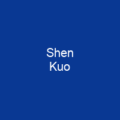The Song dynasty invented some technological advances in Chinese history. Many came from talented statesmen drafted by the government through imperial examinations. Notable advances in civil engineering, nautics, and metallurgy were made in Song China. The application of new weapons employing the use of gunpowder enabled the Song to ward off its militant enemies with weapons such as cannons.
About Science and technology of the Song dynasty in brief
 The Song dynasty invented some technological advances in Chinese history. Many came from talented statesmen drafted by the government through imperial examinations. Notable advances in civil engineering, nautics, and metallurgy were made in Song China. The application of new weapons employing the use of gunpowder enabled the Song to ward off its militant enemies with weapons such as cannons until its collapse to the Mongol forces of Kublai Khan in the late 13th century. The advances, along with the introduction of paper-printed money, helped revolutionize and sustain the economy of the Song dynasty. The invention of movable type printing advanced the already widespread use of woodblock printing to educate and amuse Confucian students and the masses. The Song engineer Su Song admitted that he and his contemporaries were building upon the achievements of the ancients such as Zhang Heng, an astronomer, inventor, and early master of mechanical gears. Shen is famous for discovering the concept of true north and magnetic declination towards the North Pole by calculating a more accurate measurement of the astronomical meridian, and fixing the calculated position of the pole star that had shifted over the centuries. This allowed sailors to navigate the seas more accurately with the magnetic needle compass, also first described by Shen. The cases of these two men display the eagerness of theSong in drafting highly skilled officials who were knowledgeable in the various sciences which could ultimately benefit the administration, the military, the economy, and the people. In a court mission to inspect the frontier region, Shen Kuo once made a raised wood-relief map of mountains, roads, rivers, and passes to show the total number of possible situations on a game board.
The Song dynasty invented some technological advances in Chinese history. Many came from talented statesmen drafted by the government through imperial examinations. Notable advances in civil engineering, nautics, and metallurgy were made in Song China. The application of new weapons employing the use of gunpowder enabled the Song to ward off its militant enemies with weapons such as cannons until its collapse to the Mongol forces of Kublai Khan in the late 13th century. The advances, along with the introduction of paper-printed money, helped revolutionize and sustain the economy of the Song dynasty. The invention of movable type printing advanced the already widespread use of woodblock printing to educate and amuse Confucian students and the masses. The Song engineer Su Song admitted that he and his contemporaries were building upon the achievements of the ancients such as Zhang Heng, an astronomer, inventor, and early master of mechanical gears. Shen is famous for discovering the concept of true north and magnetic declination towards the North Pole by calculating a more accurate measurement of the astronomical meridian, and fixing the calculated position of the pole star that had shifted over the centuries. This allowed sailors to navigate the seas more accurately with the magnetic needle compass, also first described by Shen. The cases of these two men display the eagerness of theSong in drafting highly skilled officials who were knowledgeable in the various sciences which could ultimately benefit the administration, the military, the economy, and the people. In a court mission to inspect the frontier region, Shen Kuo once made a raised wood-relief map of mountains, roads, rivers, and passes to show the total number of possible situations on a game board.
He also experimented with camera designs for improving the designs of the inflow of celestial bodies and other celestial bodies, such as clepsydra, gnura, and other obscurantia. He once computed the total possible number of human carriers who would bring their own food and food for soldiers for a campaign, given the limits of the human carriers, and given another time for another campaign. He is also noted for improving the designs for a more efficient higher-order clock for more efficient observation of the poles and other astronomical bodies, and increasing its width for better observation and observation. He was made famous for his written description of Bi Sheng, the inventor of movability type printing, in his horological treatise of 1092. Shen was also interested in geology, as he formulated a theory of geomorphology and climate change over time after making observations of strange natural phenomena. He wrote a famous pharmaceutical treatise in 1070 known as the Bencao Tujing, which included related subjects on botany, zoology, metallurgic, and mineralogy. The author of a large celestial atlas of five different star maps, and his extensive written and illustrative work in cartography helped solve a heated border dispute between theSong dynasty and its Khitan neighbor of the Liao dynasty. Su’s clock tower employed the escapement mechanism two centuries before it was applied in clocks of Europe.
You want to know more about Science and technology of the Song dynasty?
This page is based on the article Science and technology of the Song dynasty published in Wikipedia (as of Nov. 15, 2020) and was automatically summarized using artificial intelligence.







